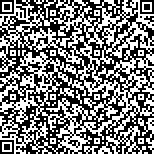| Quote
: |
任迪莎,唐蔚,潘博,周玮玮,宋程,吴润霞.基于数据挖掘的国医大师潘敏求治疗原发性肝癌的用药规律研究[J].湖南中医药大学学报英文版,2022,42(7):1152-1156.[Click to copy
] |
|
| |
|
|
| This paper
:Browser 3206times Download 1319times |
| 基于数据挖掘的国医大师潘敏求治疗原发性肝癌的用药规律研究 |
| 任迪莎,唐蔚,潘博,周玮玮,宋程,吴润霞 |
| (湖南中医药大学, 湖南 长沙 410208;湖南省中医药研究院附属医院, 湖南 长沙 410006;湖南省肿瘤医院, 湖南 长沙 410013) |
| 摘要: |
| 目的 通过中医传承计算平台,挖掘国医大师潘敏求治疗原发性肝癌(primary hepatic carcinoma,PHC)的用药经验。方法 采集2016年1月至2021年1月湖南省中医药研究院附属医院潘敏求教授门诊PHC患者病历181例,272次就诊记录,使用中医传承计算平台(V3.0)建立数据库,对患者基本信息、症状、中药频次、中药性味与功效进行统计分析,挖掘组方规律。结果 PHC患者多伴有失眠、纳少、腹胀、腹痛等症状,在272首处方中,出现频率≥50%的中药有甘草、白花蛇舌草、白术、半枝莲、女贞子等。以焦栀子、地耳草、重楼、人参、白花蛇舌草、莪术、鳖甲等为核心中药;结合临床,运用聚类分析,得到3个核心药物组合,分别主治肝胆湿热证、肝郁脾虚证、气血两亏证。结论 PHC与肝脾肾三脏关系密切,“瘀、毒、虚”为PHC的基本病机,脾虚为本,瘀毒为标,治疗常标本兼顾,体现了潘敏求教授“攻补兼施,扶正祛邪”的学术思想。 |
| 关键词: 原发性肝癌 用药规律 中医传承计算平台 潘敏求 脾肾方 |
| DOI:10.3969/j.issn.1674-070X.2022.07.014 |
| Received:July 04, 2021 |
| 基金项目:长沙市科技局基础研究项目(Kq1901068);湖南省普惠性政策与创新性环境建设计划-科普专项(2021ZK4082)。 |
|
| Research on the medication rules of national master of Chinese medicine PAN Minqiu in the treatment of primary hepatic carcinoma based on data mining |
| REN Disha,TANG Wei,PAN Bo,ZHOU Weiwei,SONG Cheng,WU Runxia |
| (Hunan University of Chinese Medicine, Changsha, Hunan 410208, China;Affiliated Hospital of Hunan Academy of Chinese Medicine, Changsha, Hunan 410006, China;Hunan Cancer Hospital, Changsha, Hunan 410013, China) |
| Abstract: |
| Objective To explore the experience of national master of Chinese medicine PAN Minqiu in the treatment of primary hepatic carcinoma (PHC) through the Chinese medicine inheritance computing platform. Methods From January 2016 to January 2021, the medical records of 181 patients with PHC and 272 visits to the outpatient clinic of professor PAN Minqiu of the Affiliated Hospital of Hunan Academy of Chinese Medicine were collected. The basic information of patients, symptoms, frequency of traditional Chinese medicine, the property, flavor and efficacy of traditional Chinese medicine were statistically analyzed, and the prescription rules were mined. Results PHC patients were often accompanied by insomnia, poor appetite, abdominal distension, abdominal pain and other symptoms. Among the 272 prescriptions, the traditional Chinese medicine with frequency ≥ 50% included Gancao (Glycyrrhizae Radix Et Rhizoma), Baihuasheshecao (Hedyotis Diffusa), Baizhu (Atractylodis Macrocephalae Rhizoma), Banzhilian (Scutellariae Barbatae Herba), and Nvzhenzi (Ligustri Lucidi Fructus) etc. The core traditional Chinese medicine were Jiaozhizi (Gardeniae Fructus Praeparatus), Diercao (Common Hedyotis), Chonglou (Paridis Rhizoma), Renshen (Ginseng Radix Et Rhizoma), Baihuasheshecao (Hedyotis Diffusa), Ezhu (Curcumae Rhizoma), Biejia (Trionycis Carapax) etc; combined with clinical, cluster analysis was used to obtain three core drug combinations, which were mainly for the liver and gallbladder damp-heat syndrome, liver and spleen deficiency syndrome, Qi and blood deficiency syndrome. Conclusion PHC is closely related to the three viscera of liver, spleen and kidney. "blood stasis, poison and deficiency" are the basic pathogenesis of PHC. Spleen deficiency is the root, blood stasis is the treetop, and the treatment often takes both treetop and root into consideration, reflecting professor PAN Minqiu's academic thought of "simultaneously applying supplementing and attacking therapies, supporting healthy Qi and eliminating evil". |
| Key words: primary hepatic carcinoma medication rules Chinese medicine inheritance computing platform PAN Minqiu Pishen Prescription |
|

二维码(扫一下试试看!) |
|
|
|
|


